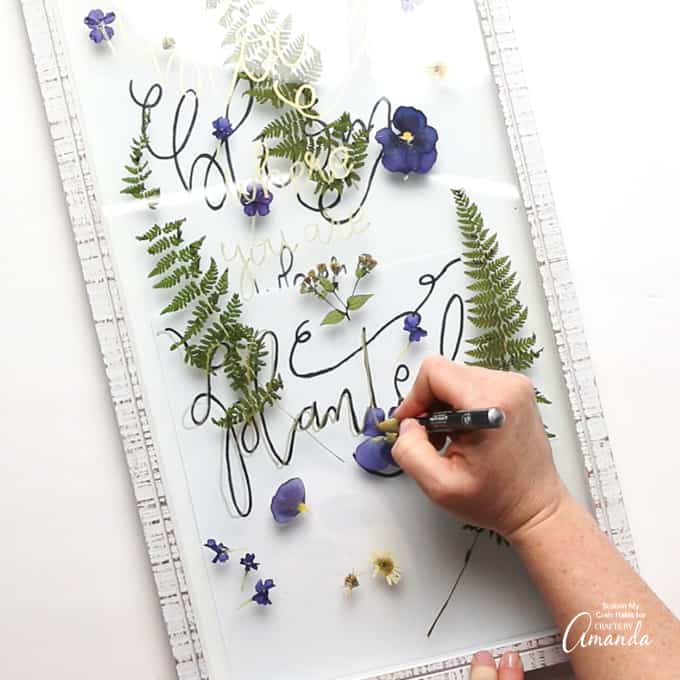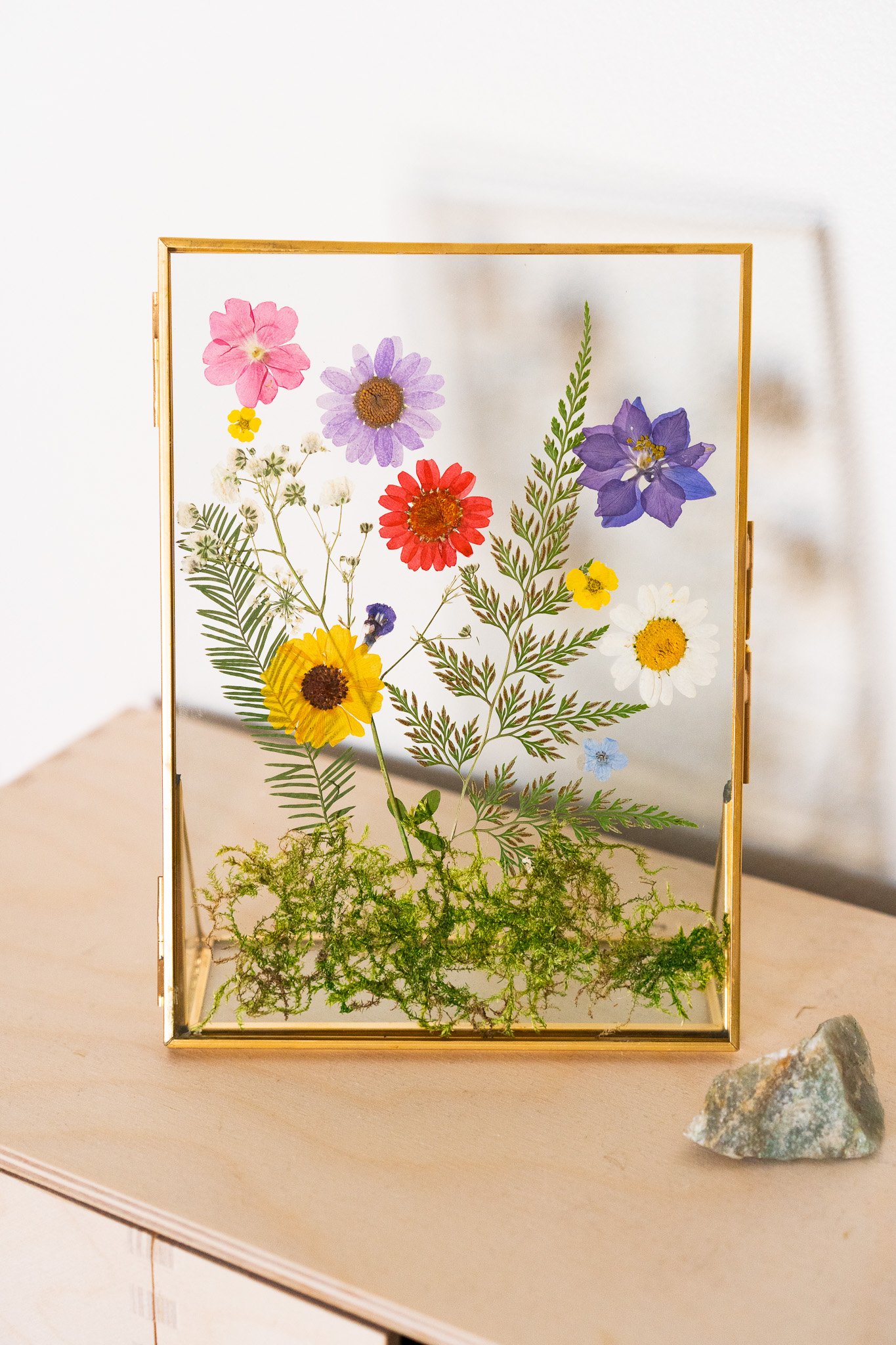The Enduring Charm of Pressed Flowers: A Journey Through History, Art, and Preservation

Pressed flowers, delicate whispers of nature captured in time, hold a timeless appeal. More than just dried botanicals, they are miniature works of art, imbued with sentiment and history. From their practical uses in scientific documentation to their aesthetic value in decorative arts, pressed flowers have captivated hearts and minds for centuries. This article delves into the rich history, artistic applications, and practical techniques behind the enduring charm of pressed flowers.
A History Pressed in Time:
While the exact origins of flower pressing remain shrouded in the mists of time, evidence suggests that the practice dates back to ancient civilizations. Herbariums, collections of dried and pressed plants, were used for medicinal and scientific purposes in ancient Egypt, Greece, and Rome. These early herbariums served as valuable resources for identifying and understanding the properties of different plants.
The Renaissance saw a resurgence of interest in botany and natural history, leading to the development of more sophisticated techniques for pressing and preserving flowers. The invention of the printing press further fueled this trend, as illustrated botanical books became increasingly popular. Pressed flower specimens served as models for illustrations, ensuring accuracy and detail.
However, the true golden age of flower pressing arrived in the Victorian era. In a society steeped in sentimentality and symbolism, flowers held a profound significance. The "language of flowers," or floriography, allowed individuals to communicate complex emotions and messages through carefully chosen blooms. Pressed flowers became a popular way to preserve these meaningful tokens of affection and remembrance.
Victorian ladies meticulously pressed flowers in albums, scrapbooks, and even jewelry. They used them to decorate greeting cards, bookmarks, and framed pictures, transforming everyday objects into cherished keepsakes. Flower pressing became a fashionable pastime, a delicate art form that reflected the refined sensibilities of the era.
The Art of Pressed Flowers:
Beyond their historical significance, pressed flowers possess an inherent artistic quality. Their delicate textures, vibrant colors, and unique shapes offer endless possibilities for creative expression.

Floral Collages and Compositions: Pressed flowers can be arranged into stunning collages and compositions, creating miniature landscapes, abstract patterns, or realistic depictions of flowers and plants. These intricate artworks can be framed and displayed as unique pieces of wall art.
Resin Art: Embedding pressed flowers in resin is a popular way to preserve their beauty and create functional objects like coasters, trays, and jewelry. The clear resin encases the delicate flowers, protecting them from damage and allowing their vibrant colors to shine through.
Decoupage: Pressed flowers can be used in decoupage, a decorative technique that involves adhering paper or fabric cutouts to a surface. Pressed flowers add a natural and elegant touch to decoupage projects, transforming ordinary objects into personalized works of art.
Mixed Media Art: Pressed flowers can be incorporated into mixed media artworks, adding texture, color, and dimension to paintings, sculptures, and other artistic creations. Their delicate beauty contrasts beautifully with other materials, creating visually striking and thought-provoking pieces.

Floral Jewelry: Pressed flowers can be used to create beautiful and unique pieces of jewelry. They can be encased in resin, set in bezels, or even directly attached to metal findings. Floral jewelry offers a delicate and personal way to wear nature’s beauty.

The Practical Art of Flower Pressing:
While the artistic applications of pressed flowers are diverse, the basic technique remains relatively simple. Here’s a step-by-step guide to pressing flowers at home:
Gather Your Materials: You will need fresh flowers, blotting paper (or newspaper), heavy books (or a flower press), and optional tools like scissors or tweezers.
Select and Prepare Your Flowers: Choose flowers that are relatively flat and dry. Remove any excess foliage or stems that may be difficult to press.
Arrange Your Flowers: Place the flowers between two sheets of blotting paper or newspaper. Arrange them carefully, ensuring that they are not overlapping.
Press Your Flowers: Place the blotting paper containing the flowers between the pages of a heavy book or inside a flower press. Add more books or tighten the screws of the flower press to apply even pressure.
Wait Patiently: Allow the flowers to dry for several weeks, checking them periodically and replacing the blotting paper if necessary. The drying time will vary depending on the thickness of the flowers and the humidity of the environment.
Remove and Store: Once the flowers are completely dry and papery, carefully remove them from the blotting paper. Store them in a dry, dark place, such as an airtight container or a scrapbook, to prevent fading and damage.
Tips for Successful Flower Pressing:
Choose the Right Flowers: Flowers with flat faces and thin petals, such as pansies, violets, and daisies, are generally easier to press. Avoid flowers with thick centers or fleshy petals.
Press Flowers Quickly: The sooner you press flowers after picking them, the better. Fresh flowers retain their color and shape more effectively.
Use Proper Materials: Blotting paper or newspaper absorbs moisture and prevents mold growth. Avoid using glossy paper, which can trap moisture and damage the flowers.
Apply Even Pressure: Consistent pressure is essential for drying flowers evenly and preventing them from wrinkling or curling.
Be Patient: The drying process takes time. Avoid the temptation to check the flowers too frequently, as this can disrupt the drying process.
The Modern Renaissance of Pressed Flowers:
In recent years, there has been a resurgence of interest in pressed flowers. Artists, designers, and crafters are rediscovering the beauty and versatility of this age-old technique. Social media platforms like Instagram and Pinterest have played a significant role in showcasing the diverse applications of pressed flowers and inspiring a new generation of enthusiasts.
From contemporary art installations to sustainable fashion designs, pressed flowers are finding their way into unexpected and innovative contexts. They are being used to create eco-friendly packaging, personalized stationery, and even edible decorations for cakes and pastries.
The enduring charm of pressed flowers lies in their ability to connect us with nature, evoke memories, and inspire creativity. They are a reminder of the beauty and fragility of the natural world, a tangible link to the past, and a source of endless artistic inspiration.
Frequently Asked Questions (FAQ):
Q: What types of flowers are best for pressing?
A: Flowers with flat faces and thin petals, such as pansies, violets, daisies, and cosmos, are generally easier to press. Avoid flowers with thick centers or fleshy petals like roses or lilies, although these can be pressed with more effort and careful preparation.
Q: How long does it take to press flowers?
A: The drying time varies depending on the thickness of the flowers and the humidity of the environment. Generally, it takes 2-4 weeks for flowers to dry completely.
Q: How do I prevent my pressed flowers from fading?
A: Store pressed flowers in a dry, dark place, such as an airtight container or a scrapbook. Exposure to sunlight and moisture can cause fading and damage.
Q: Can I press flowers that have already started to dry?
A: It’s best to press flowers when they are fresh. However, if you have flowers that have already started to dry, you can try rehydrating them slightly by placing them in a humid environment for a few hours before pressing.
Q: What if my pressed flowers turn brown?
A: Browning can occur if the flowers are not dried quickly enough or if they are exposed to moisture. Ensure you are using proper drying materials like blotting paper and that the flowers are stored in a dry environment.
Q: Can I press leaves and other foliage?
A: Yes, leaves and other foliage can be pressed using the same techniques as flowers. They can add texture and interest to your pressed flower arrangements.
Q: Where can I find supplies for pressing flowers?
A: Blotting paper, flower presses, and other supplies can be found at craft stores, online retailers, and some garden centers.
Conclusion:
The art of pressing flowers is more than just a hobby; it’s a connection to history, a celebration of nature’s beauty, and a gateway to creative expression. Whether you’re a seasoned artist or a curious beginner, the world of pressed flowers offers endless possibilities for crafting, decorating, and preserving cherished memories. By understanding the history, mastering the techniques, and embracing your own creativity, you can unlock the enduring charm of pressed flowers and create miniature masterpieces that will be treasured for years to come. The delicate beauty of pressed flowers continues to bloom, reminding us of the simple joys and enduring power of nature’s artistry.


